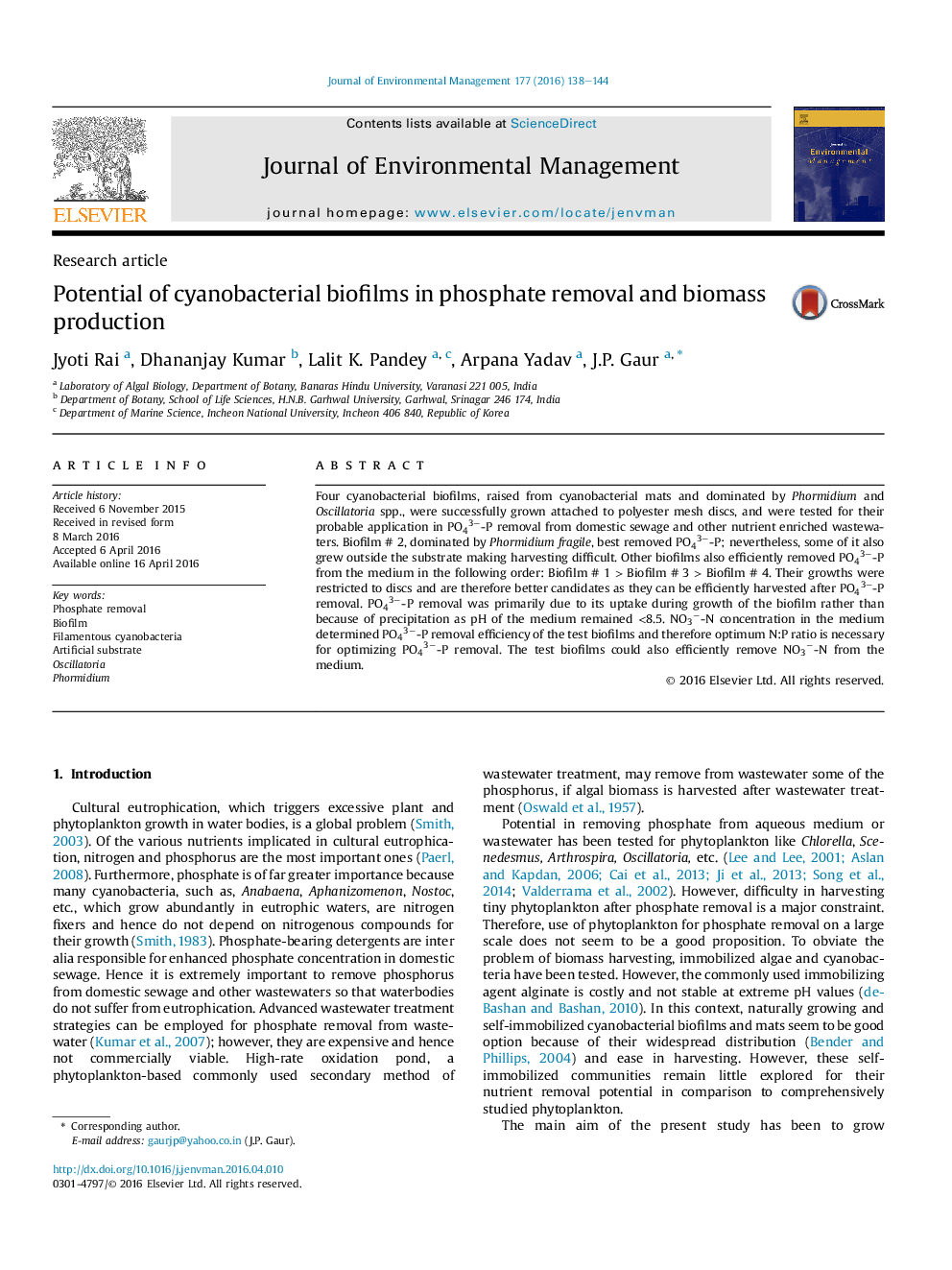| Article ID | Journal | Published Year | Pages | File Type |
|---|---|---|---|---|
| 7480353 | Journal of Environmental Management | 2016 | 7 Pages |
Abstract
Four cyanobacterial biofilms, raised from cyanobacterial mats and dominated by Phormidium and Oscillatoria spp., were successfully grown attached to polyester mesh discs, and were tested for their probable application in PO43â-P removal from domestic sewage and other nutrient enriched wastewaters. Biofilm # 2, dominated by Phormidium fragile, best removed PO43â-P; nevertheless, some of it also grew outside the substrate making harvesting difficult. Other biofilms also efficiently removed PO43â-P from the medium in the following order: Biofilm # 1Â >Â Biofilm # 3Â >Â Biofilm # 4. Their growths were restricted to discs and are therefore better candidates as they can be efficiently harvested after PO43â-P removal. PO43â-P removal was primarily due to its uptake during growth of the biofilm rather than because of precipitation as pH of the medium remained <8.5. NO3â-N concentration in the medium determined PO43â-P removal efficiency of the test biofilms and therefore optimum N:P ratio is necessary for optimizing PO43â-P removal. The test biofilms could also efficiently remove NO3â-N from the medium.
Keywords
Related Topics
Physical Sciences and Engineering
Energy
Renewable Energy, Sustainability and the Environment
Authors
Jyoti Rai, Dhananjay Kumar, Lalit K. Pandey, Arpana Yadav, J.P. Gaur,
